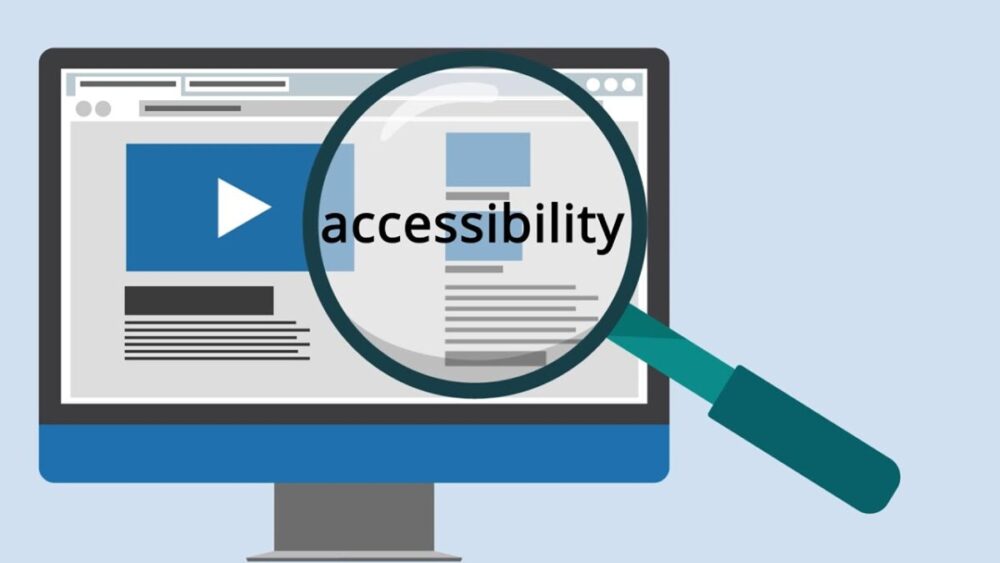Are you an organization that is currently looking to ensure their digital resources are accessible for everyone? Accessibility may seem like an insurmountable hurdle, but there are steps that you can take to test the user experience on your site. With hard work and diligence, any business can establish itself as an industry leader in accessibility. This post will address common accessibility issues like color contrast, image alt tags, text links over images and more; identify free online tools suitable for testing digital accessibility; discuss strategies for creating an inclusive workplace within organizations; as well as offer tips to foster an inclusive culture within their organizations – plus much more! Whether at home or the workplace, make life a little simpler by testing your digital products using these handy tricks!
Understand the Basics of Digital Accessibility for Your Business

Accessibility in today’s digital era has never been more crucial. As the use of technology grows, it is imperative that everyone can fully engage with and gain from participating online – particularly those living with disabilities who may face barriers when trying to navigate websites or digital content. Understanding digital accessibility basics is critical for any business that seeks to provide equal access for all customers regardless of ability.
Implementing even small changes, like providing alternative text for images and running automated accessibility testing, can have a big impact on improving the accessibility of digital content. Not only will this improve customer experiences and lead to greater engagement and loyalty from all your customers, but it can also enhance business operations overall. So, take some time now to educate yourself on digital accessibility and discover its many advantages for your organization.
Create a Checklist of Features Which Must be Addressed for Accessibility

Ensuring that your website or digital product is accessible for all users is both ethically responsible and legally required. Yet, with so many moving parts involved in making websites accessible, it can be overwhelming knowing where to begin. Therefore, having a comprehensive checklist of features which need to be addressed for accessibility (for instance heading structure issues, image alt-text issues, keyboard navigation capabilities) will enable you to provide an inclusive digital experience where users of all abilities can seamlessly interact with it.
Use Online Tools Such to Test the Accessibility of Your Website

Accessibility in website development is both essential and a priority in today’s digital environment. When people with disabilities can use your site, accessibility testing becomes much simpler – impacting both audience engagement and business performance in significant ways. There are plenty of online tools that make testing fast, easy and accurate. Looking for an extensive platform which checks everything from broken links and spelling errors to compliance with accessibility standards – helping you identify issues before they become an issue and ensure your site welcomes and includes everyone.
There are automated testing tools that make accessibility a top priority in today’s digital environment, helping organizations address potential accessibility issues quickly and efficiently. Through automation, these tools quickly scan for accessibility issues on websites or apps and offer actionable insights for remediation. By including automated testing tools into your development process, organizations can ensure their digital content is accessible for all users regardless of any disabilities they may possess.
At your business, you want to ensure that everyone can access and benefit from the digital experiences you offer. Automated accessibility testing tools can help ensure that your website or application meets accessibility standards by offering valuable insight into any issues with it and offering actionable solutions to fix them. By including automated accessibility testing in your workflow process, you can foster an inclusive environment within your organization while offering exceptional digital experiences to all of your customers.
Consider Testing the Contrast Ratio of Text and Background Colors on Your Website

As part of designing a website, it’s critical that designers take note of the contrast ratio between text and background colors. Not only will it impact aesthetics and usability, but it can also have an effect on accessibility and usability. According to Web Content Accessibility Guidelines (WCAG), an optimal contrast ratio should meet at least 4.5:1 for regular text and 3:1 for large text; meeting this guideline ensures your website can accommodate a wider variety of users including those with vision impairments. Take time out when checking this aspect of your website design to enhance user experience across the board!
Be Sure All Images Contain Relevant Alt-Text for Those With Visual Impairments

As part of creating digital content, there are many key components to keep in mind when making digital creations. One such aspect is making sure all images contain appropriate alt-text for those with visual impairments – this makes your work more accessible for all and ensures those relying on assistive technologies can fully engage with what has been produced by you. While adding alt-text may seem like a minor detail, adding appropriate alt-text can have an enormous effect on user experiences for those living with visual impairments. Make sure next time you create something digital make sure you take time out to add alt-text. Help make the web a more inclusive place by contributing towards making the web more inclusive!
Conclusion
Digital accessibility is an emerging issue that every business should take note of and address promptly and correctly to avoid potentially dire repercussions. There are various resources and tools available to you that can assist in making sure that your website is accessible for all users. Be sure to understand the basics, develop a list of features to address, use online tools, monitor contrast between text and background colors and ensure all images have appropriate alt-text for those with visual impairments. By taking these steps, you’ll be well on your way to creating an inclusive space for everyone who visits or interacts with your website or digital business. Showing recognition to those living with disabilities isn’t only essential work; it’s ethical too because it is what the world needs at the moment. Don’t neglect this aspect of your online presence as a business because it will affect your investment and profit in the long run.





